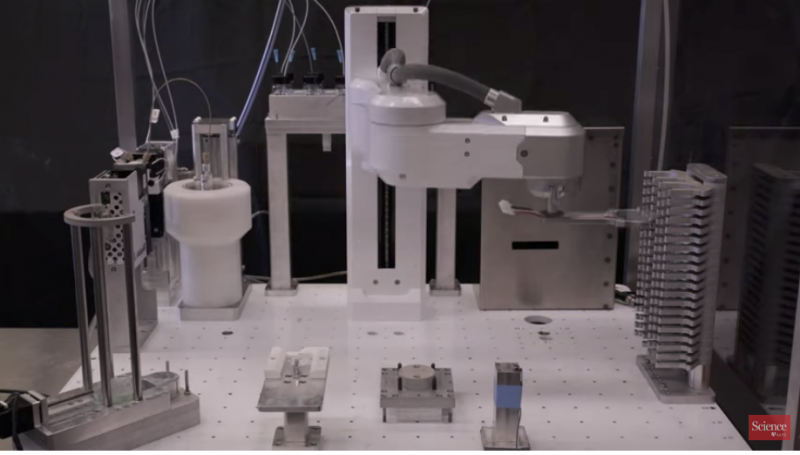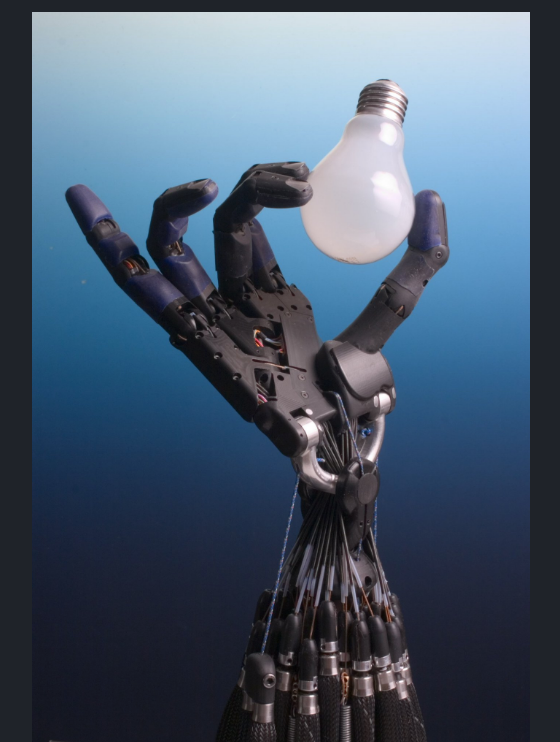Creating the Products of Tomorrow with AI Testing Today
Consumers rarely think about what exactly are in the gadgets that make up our modern world. Some of these conveniences would not be possible with just the stuff we dig out of the ground, since many components don’t exist in nature. They must be invented, replicated, and, of course, first be tested⏤more than a million times in some cases.
An article by Robert F. Service for sciencemag.com tells the story of a robot used to test and produce a product that used to take 9 months to make. The AI-driven robot did it in 5 days.
In July 2018, Curtis Berlinguette, a materials scientist at the University of British Columbia in Vancouver, Canada, realized he was wasting his graduate student’s time and talent. He had asked her to refine a key material in solar cells to boost its electrical conductivity. But the number of potential tweaks was overwhelming, from spiking the recipe with traces of metals and other additives to varying the heating and drying times. “There are so many things you can go change, you can quickly go through 10 million [designs] you can test,” Berlinguette says.
So he and colleagues outsourced the effort to a single-armed robot overseen by an artificial intelligence (AI) algorithm. Dubbed Ada, the robot mixed different solutions, cast them in films, performed heat treatments and other processing steps, tested the films’ conductivity, evaluated their microstructure, and logged the results. The AI interpreted each experiment and determined what to synthesize next. At a meeting of the Materials Research Society (MRS) here last week, Berlinguette reported that the system quickly determined a recipe and heating conditions that created defect-free films ideal for solar cells.
Below is a video of a next-generation robotics platform doing in minutes what used to take humans weeks or even months to do.
With more than 100 elements in the periodic table and the ability to combine them in virtually limitless ways, the number of possible materials is daunting.
“The good news is there are millions to billions of undiscovered materials out there,” says Apurva Mehta, a materials physicist at the Stanford Synchrotron Radiation Lightsource in Menlo Park, California. The bad news, he says, is that most are unremarkable, making the challenge of finding gems a needle-in-the-haystack problem.
To speed the process, many teams have added computer modeling to predict gem formulas. “We’re seeing an avalanche of exciting materials coming from prediction,” says Kristin Persson of Lawrence Berkeley National Laboratory (LBNL) in California, who runs a large-scale prediction enterprise known as the Materials Project. But those systems still typically rely on graduate students or experienced scientists to check the results of experiments and decide how to go forward. Yet, “People still need to do things like sleep and eat,” says Keith Brown, a mechanical engineer at Boston University (BU).
So, like Berlinguette, Brown and his colleagues built an AI-driven robotics system. Their goal was to find the hardest possible 3D-printed structures. Their toughness comes from a blend of high strength and ductility, and depends on the details of a structure, even if the material itself doesn’t change. Predicting which shape will be toughest isn’t feasible, Brown says. “You have to do the experiment.”
Some experiments are tailor-made for AI driven robots, like the Fukushi disaster. Other more promising uses, like creating new materials, is already in use.
read more at sciencemag.org









Leave A Comment